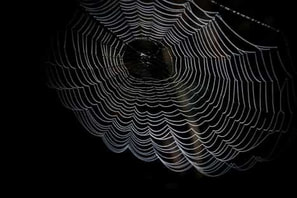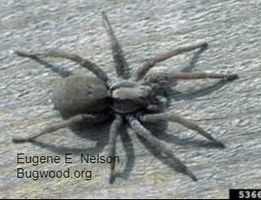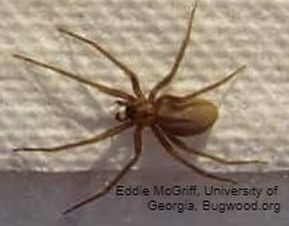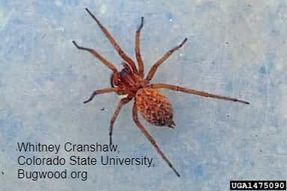Pest Control in Parker, Colorado, and Surrounding Areas
Call Today 720-597-8857
Call Today 720-597-8857
Spider ControlParker Pest Control ServicesCall Us Now 720-597-8857 (Click to call)
Generally speaking, spiders are beneficial to have around. However, some people are afraid of them and may prefer to not have large populations in and around their home. Additionally, there are some species that are harmful and if you are encountering a number of these more harmful ones, you may want the help of Parker Pest Control Services with your spider control needs.
Or visit pages on these pests: Rodents Insects Wildlife Birds Spider Control:
Spiders are of the family arachnid and are different from insects. They actually feed on insects and other arthropods. Generally speaking, they are beneficial in helping manage pests and may be the most important biological control of insect pests in gardens, fields, forests, and homes. Despite this, some people fear spiders because of stories and myths. Others don’t like them in and around the home due to their webs.
Spiders are attracted to attics and crawl spaces, either because they are dry and warm, or because they are cool and moist. In every case, spiders prefer darkness. These arachnids will often enter homes through poorly sealed windows or through cracks around door frames. Once they’re inside, they start to cultivate and lay egg sacs. A single sac can contain hundreds of eggs. Common Colorado spiders include:
 Yellow Sac Spider Yellow Sac Spider
 Grey Wolf Spider Grey Wolf Spider
Though all spiders can bite and many bites are painful, most spiders are low risk ones and not aggressive. There are a few spiders, however, whose bite requires medical attention and need to be avoided whenever possible. Here are some to watch out for; call Parker Pest Control Services to help with spider extermination if you are not sure you can get rid of the spider without getting bit yourself or if you want to prevent spider populations from being in your home in general.
 Black Widow Spider Black Widow Spider
Black Widow Spider Control:
The western black widow spider is the species found in Colorado. Black widows have bodies about ½ inch long. The female is normally shiny black with a red hourglass marking on the underside of the abdomen. The marking may range in color from yellowish orange to red and its shape may range from hourglass to a dot. The male black widow is light brown with lighter stripes on the underside and is smaller in size than the female. Outdoors, black widows prefer to live in woodpiles, rubble piles, under stones, and in hollow stumps. Indoors, they can be found in sheds, garages, and in undisturbed, cluttered areas in basements and crawl spaces. The web of black widows is not symmetrical but is messy with silk strings going every which way. Black widow spiders are highly venomous and can be deadly, especially for the elderly and children. Only a small amount of venom can cause serious illness as the poison attacks the nervous system. Effects of a black widow bite may be headache, nausea, vomiting, chest and/or abdominal pain, pyrexia, hypertension, sweating, excess salivation, muscle cramps, dizziness, watery eyes, difficulty breathing, trembling, and limb paralysis. The male black widow rarely bites, so it is the female black widow who is of particular danger. Immediate first aid and medical attention should be sought if you suspect you have been bitten. Pets can also be bitten by black widows and would need medical attention.  Brown Recluse Spider Brown Recluse Spider
Brown Recluse Control:
The brown recluse spider can be deadly and aggressive if it feels threatened or is suddenly encountered. Examples of times people may be bitten are if the spider is hiding in a shoe when the person puts it on or the person grabs a piece of wood in a wood pile where one is hidden. Their venom can cause significant cutaneous injury with tissue loss and necrosis. When it first occurs, however, the bite of a brown recluse is generally not painful, so sometimes one might not know he or she has been bitten for several days. Symptoms of the bite of a brown recluse may initially be similar to those of the flu. Then, after one to five days, the bite area will become red, tender to touch, and may start festering. Brown recluse spiders are about ¼ to ¾ inches in body (or about the size of a quarter or less) with a dark violin shape located on the top leg attachment region with the neck of the violin pointing backward toward the abdomen. They have eight eyes with six of those arranged in pairs, one pair in front, and a pair on either side. These spiders don’t move very fast and generally prefer to hide out in dark, remote places such as a woodpile, a barn, the back corner of a closet or even inside a shoe or a box. They are more predominant in the south of the U.S. but do exist from coast to coast. Although single specimens are sometimes brought into the state, natural populations are not found in Colorado.  Hobo Spider Hobo Spider
Hobo Spider Control:
The hobo spider is one that more people need to be aware of as they are perhaps the real cause of mistaken brown recluse bites and are more common in Colorado than the recluse. Their bite patterns and symptoms are similar to that of the brown recluse; the bite can cause necrosis but not as severely. Their bites are not known to be fatal to humans, but within half an hour, the affected site will become numb, swollen, red, and callous. Over the next couple of days, blisters will appear, break, and begin to weep potentially followed by a necrotic lesion (dying skin). Other common symptoms can include headache, nausea, weakness, fatigue, temporary memory loss, and vision impairment. In any case, first aid and medical attention should be sought if bitten. The hobo spider is generally referred to as an aggressive house spider and is found in Colorado. They are a little smaller than 2 inches long, generally brownish in color, and have a zigzag design on the back of their abdomen. Their legs are hairier than those of a brown recluse. If they manage to stay hidden from view, their funnel-like nests are a telltale sign of their presence. They rarely climb up vertical surfaces so are uncommon above basements and ground levels. To help keep spider populations down around your home:
Protect what matters most to you
|
|


